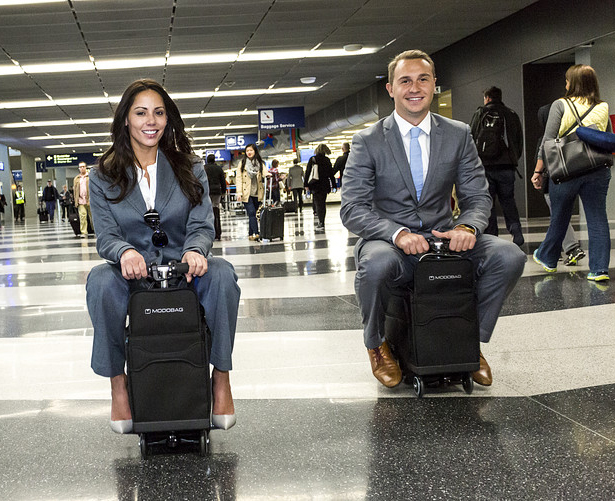An unlicensed suitcase
Next time you’re trudging through an airport dragging a suitcase, just imagine you could pull some handlebars out of that bag, sit on it and zoom to your gate at 5 miles an hour. That is the plan for Modobag, a Chicago startup that has spent two years developing a $1,500 rideable suitcase, even though some airports say they won’t be allowed. When visiting another country it’s important to get acquainted with the laws of the land to avoid serious trouble. Although it’s good advice, it can be really hard to know all the legal ins and outs of another country, especially one with traffic laws as subtle and minute as Japan’s. Unfortunately, this resulted in some legal troubles for one woman who took her suitcase out for a spin. The incident occurred on 31 March when the woman, a Chinese national studying in Japan, was caught riding her suitcase on the sidewalk in Fukushima Ward, Osaka City. Her suitcase was equipped with wheels and an electric motor, allowing her to reach speeds of up to 8 miles per hour.
The woman is denying the charges and told police: “I didn’t think of it as a vehicle, so I didn’t think I needed a license.” While declaring you didn’t know the law you broke was a law isn’t much of a legal defense, it’s easy to sympathize with her situation. Traditionally, the main factor governing the classification of vehicles is engine size. A few decades ago, this was all pretty straightforward and helped to distinguish things like a dirt bike or a scooter from a Harley. But in recent years, matters have been complicated with the advent of electric power-assisted bicycles and kick-scooters… and suitcases now too, apparently. Since their various shapes, sizes, and weights can make displacement and power output poor indicators of actual speed and acceleration, revisions have been made to regulations regarding their use, with the vehicle’s top speed now taken into consideration.
One general rule of thumb in Japan is that a vehicle with a maximum speed of 3.7 miles per hour or less is treated as a pedestrian rather than a vehicle. That’s why old folks on mobility scooters don’t get busted. The bottom line is that while in Japan, if you’re planning on riding a suitcase or whatever else they come up with that’s ridable, either make sure you have a license or make sure it can’t go faster than four miles per hour.
Luggage Laughs
Don’t you just hate that situation when you’re picking up your bags at the airport, and everyone’s luggage is better than yours.
A worst case scenario.
Airport security asked me if I’ve seen anything unusual.
…I just paid $18 for a coke & a ham sandwich…Let’s start with that.
Wherever you go, there you are.
Your luggage is another story.
My girlfriend dumped me because I’m so disorganized.
So she packed my suitcase and I left.
I was at the airport when I saw a guy fall unconscious on the baggage carousel.
He came around slowly.
December 24 Birthdays
1931 – Mary Higgins Clark, 1973 – Stephanie Meyer, 1963 – Mary Ramsey, 1962 – Kate Spade
1971 – Ricky Martin, 1985 – Burak Ozcivit , 1957 – Anil Kapoor, 1974 – Ryan Seacrest




